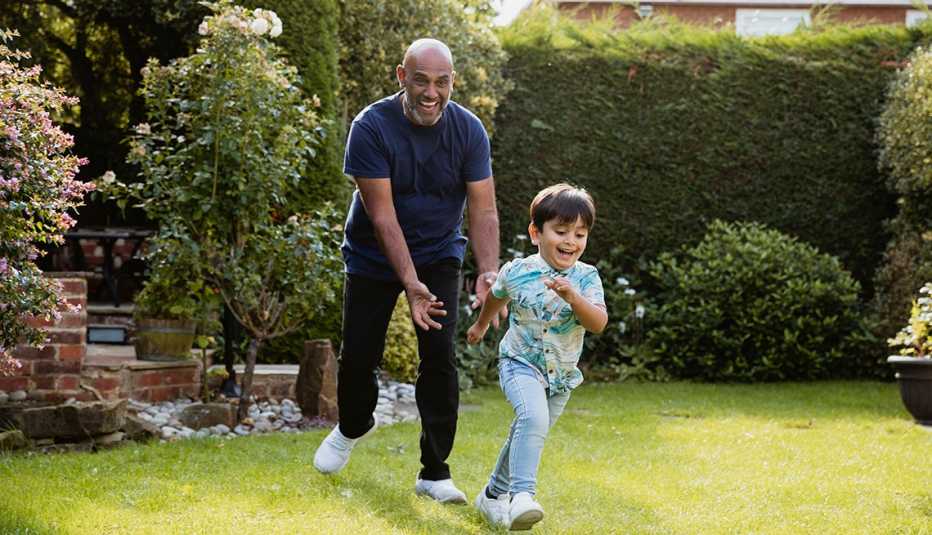Staying Fit


When Fran and John Shemkus wanted to create space in their Massachusetts backyard to keep their four grandchildren busy, they got out the mower ... but not for the lawn.
"On the side of our property is a small wooded section between us and a neighbor. To the kids, it's a forest,” says Fran, 70. So her husband, John, 72, regularly mows a meandering “secret” path through the trees that's an expedition of imagination for their grandkids, ages 4 through 8.


AARP Membership— $12 for your first year when you sign up for Automatic Renewal
Get instant access to members-only products and hundreds of discounts, a free second membership, and a subscription to AARP the Magazine.
"It's a big adventure,” Fran says. “There's a lot of pretend stuff going on.”
If you want to get the grandkids outside, creating a safe and fun play space can be easy and inexpensive, even if you have a postage-stamp yard or rely on public spaces. Though there's nothing wrong with traditional climbing structures or swings, experts say there are other yard-enhancing ways to establish fun zones that nurture independence, creativity and a love of nature.
This is a particularly important time to create outdoor havens for children, says Angela Hanscom, a New Hampshire-based pediatric occupational therapist. Hanscom developed TimberNook, which offers outdoor, nature-based play programming for schools, camps and other organizations, and even for private parties. She also wrote the book Balanced and Barefoot, about the importance of “unrestricted” outdoor play, such as digging in a sandbox.
The uncertainty of the coronavirus pandemic, being separated from many of their friends and attending school remotely has created stress for kids.
"This is a scary time,” Hanscom says. “And children — their way to cope is through play."

































































